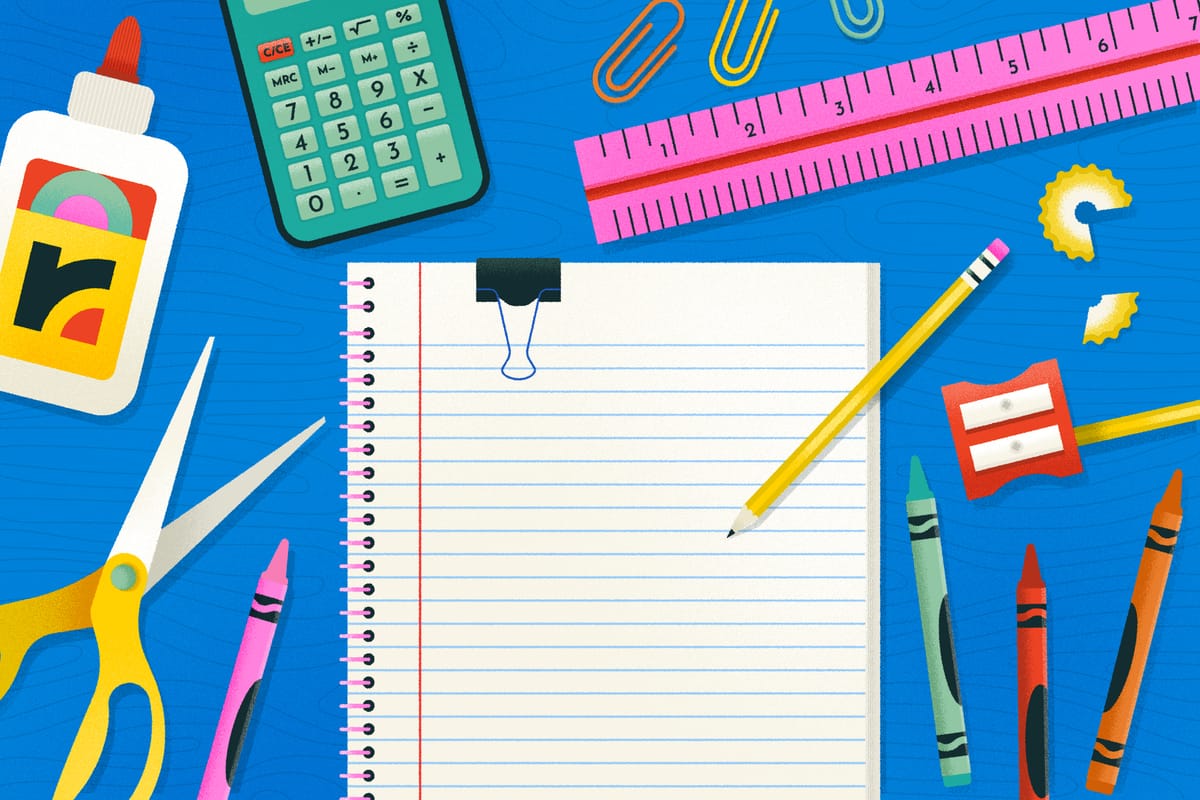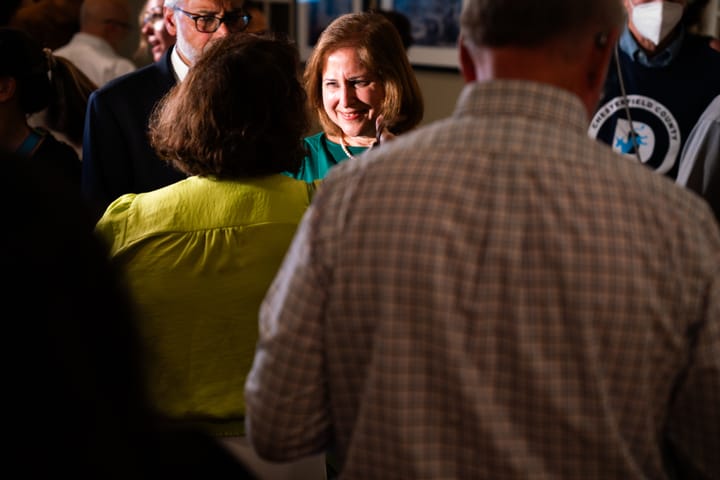
Teacher attendance rates vary widely across Richmond. Experts say it's a big deal.
One day in April, 15 teachers were absent from Lucille Brown Middle School, representing about a quarter of the Richmond school’s 57 full-time classroom staffers.
“That doesn’t happen often,” said Andrea Bryant, an eighth-grade science teacher at the school and president of the Richmond Education Association. “But it happened on this day.”
Richmond Public Schools teachers missed, on average, 17.3 school days during the 2023-24 school year, according to data obtained by the Richmonder through a Freedom of Information Act request.
That number outpaces their counterparts in Henrico County, where teachers averaged 13.2 days absent in each of the last two school years. (Chesterfield said it doesn't keep teacher absence information.)
Data reviewed by The Richmonder shows the numbers holding largely steady over a three-year period, including the most recent school year (2024-25). Individual schools fluctuated more broadly over that period, a representation of teachers going on parental or long-term leave, but district-wide numbers stayed consistent.
The 2023-24 school year statistics are broken down by school below:
Importance of teacher attendance
Teacher absences can have a devastating impact on primary and secondary education, experts say.
“It really disrupts. Schools really thrive on continuity and routine,” said VCU assistant professor Dr. Jesse Senechal, the executive director for the Institute for Collaborative Research and Evaluation. “That’s when they work well. When those routines start to break down – and that will often happen through absences – then it really has a cascading, detrimental effect.”
Senechal has been at VCU since 2009. His work has focused on teacher development and training, working collaboratively on research with area school districts.
Before that, he spent 14 years as a high school English teacher in Chicago and Richmond. His mother and grandmother were both teachers.
His experiences and his research all point to an important fact about education, he said.
“Relationships are the life of schools, it’s where everything happens,” Senechal said. “The primary relationship being that between the teacher and the student. Learning happens when that relationship is strong. And when you have disruptions in those relationships it’s going to really, really impede the learning.”
The quality of a classroom teacher is one of the top predictors of learning success for elementary and high school students, education experts say, so having teacher absences can be an equally detrimental factor.
In theory, a high-quality substitute filling in for a less-qualified teacher could have a positive impact. But more frequently, days when teachers are out of their classrooms become less productive learning days.
“What determines how much (absences) matter is who’s in front of the room in place of that teacher,” JMU associate professor of education John Almarode said.
For Almarode, the impact of teacher absences is another data point indicating a larger conclusion – teachers matter.
The Richmonder is powered by your donations. For just $9.99 a month, you can join the 1,000+ donors who are keeping quality local journalism alive in Richmond.
Research has shown that, when a teacher is absent 10 or more days, the students in that teacher’s class see a decline in test scores, said Senechal.
The impact is greater in cumulative subjects, like math and English, and for special education and English as a second language populations. It’s also greater for younger learners, who spend most of their day with their primary teachers.
“When you have a teacher absence at the elementary level, that’s a teacher who’s with those kids all day long,” Senechal said. “Whereas, in secondary, if your English teacher is out, your other teachers will be there. The students are more affected because they have more time without their assigned teacher.”
Almarode noted there can be an unintended consequence associated with teacher absences. Students can perceive teachers not coming to school as an indication of how those teachers feel about their students.
“If students feel their teacher doesn’t like them, it has a negative impact on their learning,” he said.
Finding solutions
The issue is one experts say must be tackled on two fronts. First, what can be done to cut down on the number of days teachers are absent? Second, what can be done to maximize learning when teachers are out of school?
“Some of it could be attendance policies for teachers,” Senechal said. “How much are administrators doing to make sure teachers show up for work? Are there incentives for showing up to work? Then there's also working conditions. When working conditions are poor, when teachers are feeling stressed and burnt out, not supported in their work environments, they may be more likely to skip days.”
In Richmond, teachers don’t get paid for unused time but they are allowed to bank it, which Bryant said many teachers find more valuable.
For example, after rarely taking time off during a two-year period, Bryant was able to donate about 200 hours of time off to her husband, a fellow Richmond teacher, when he dealt with a long-term illness, she said.
“As a Division, we know that consistency in the classroom is a key driver of student success,” an RPS spokesperson wrote. “This is why we've invested so deeply in recruitment and retention, as well as in providing flexibility for teachers and staff. Following the pandemic, RPS recognized the need for a more supportive and inclusive approach to time off and well-being, so we've recognized a broader range of religious observances, and added Wellness Days to our calendars. Both of these have contributed to a more balanced work environment and helped reduce burnout, ultimately supporting better teacher attendance.”
Other factors
One thing Bryant and the REA would like to see addressed is the length of the school days in Richmond, where elementary school days are 6 hours, 30 minutes long, while middle school and high school each go 7 hours.
In Henrico, the elementary school day goes 6 hours, 20 minutes, middle school 6 hours, 25 minutes and high school 6 hours, 55 minutes.
“I think in Richmond a big issue is our school days are longer than in other districts,” Bryant said. “There’s this misconception that more time equals more learning.”
Almarode said calendars that offer more breaks can help reduce teacher absence, though overall – in more than 75 studies of the school calendar – research has shown that adjustments to the calendar have a “small overall effect size” on student learning.
One way Richmond makes sure learning continues when teachers are absent is by having annual substitutes – subs who work in one school building all year. That allows them to have familiarity and relationships with the students.
The thing that may be most difficult to measure – educators and experts agree – is the lingering impact of the COVID-19 pandemic.
“The last two years have been transition years or healing years,” Bryant said. “Because we’ve had teachers who have long-term COVID, teachers who have had heart issues, nerve issues, that have affected them. They’ve had losses in their families.”
For Almarode, individual teacher absence numbers may not tell the whole story, because teacher quality remains the most important variable.
“Does a highly qualified teacher have an impact on learning? That’s the core question, and the answer is yes,” he said. “We see, on average, in the work that I do, that the general effect of a highly qualified teacher is, on average, about .38 standard deviations, which is a significant effect size.
"The research has been very clear that the single most important factor in a child's growth and development, pre-K to 12, for which we have control, is the teacher.”
The Richmonder is powered by your donations. For just $9.99 a month, you can join the 1,000+ donors who are keeping quality local journalism alive in Richmond.






